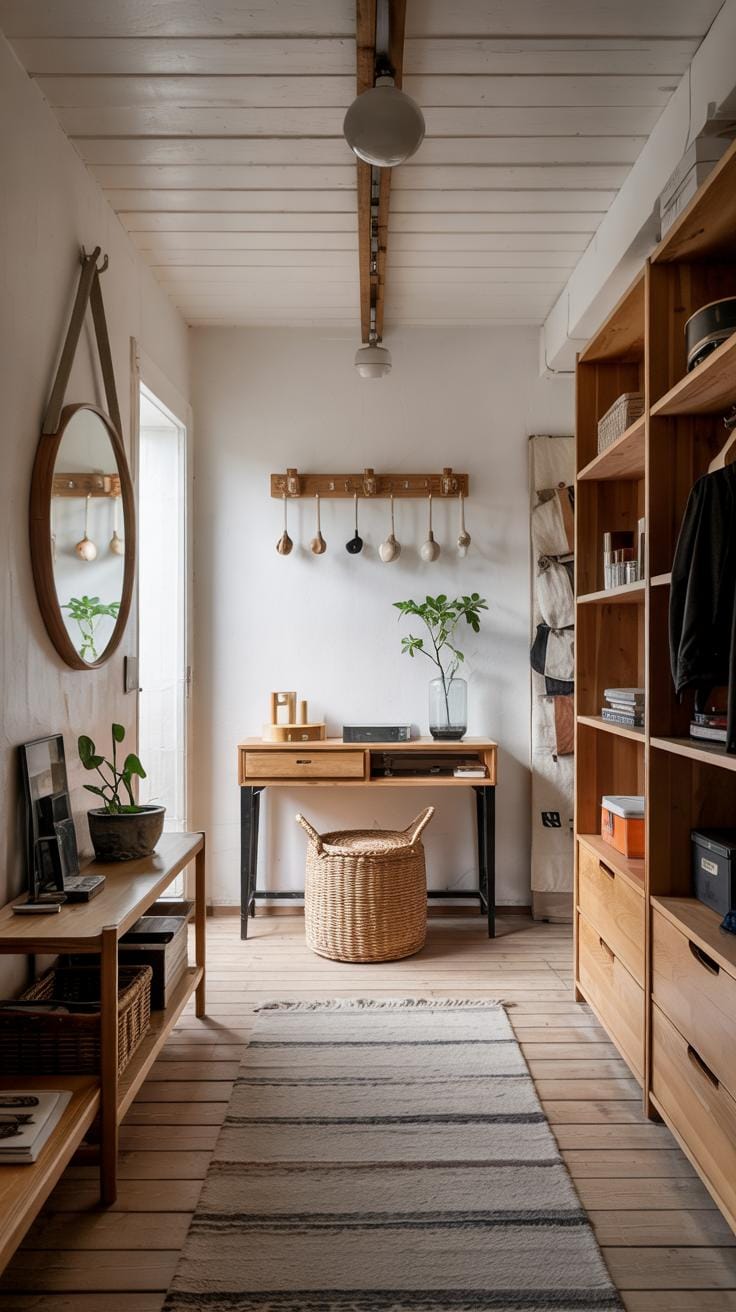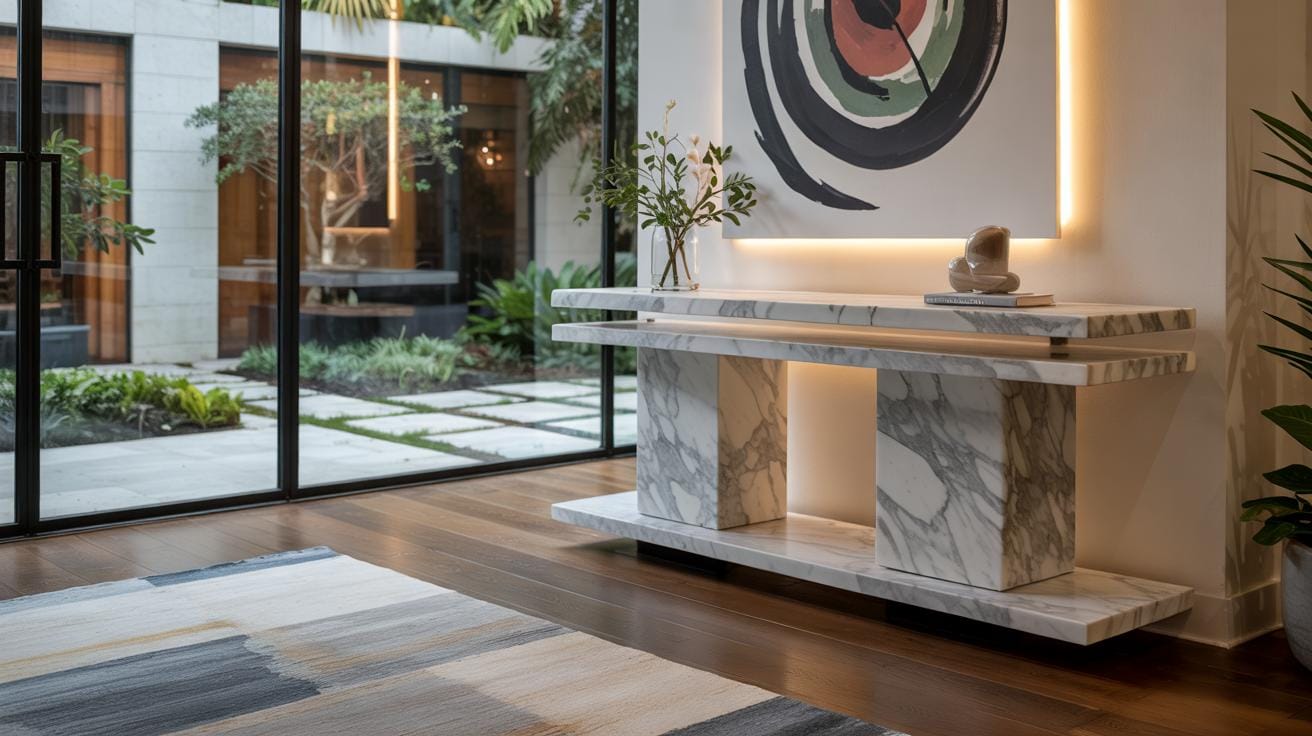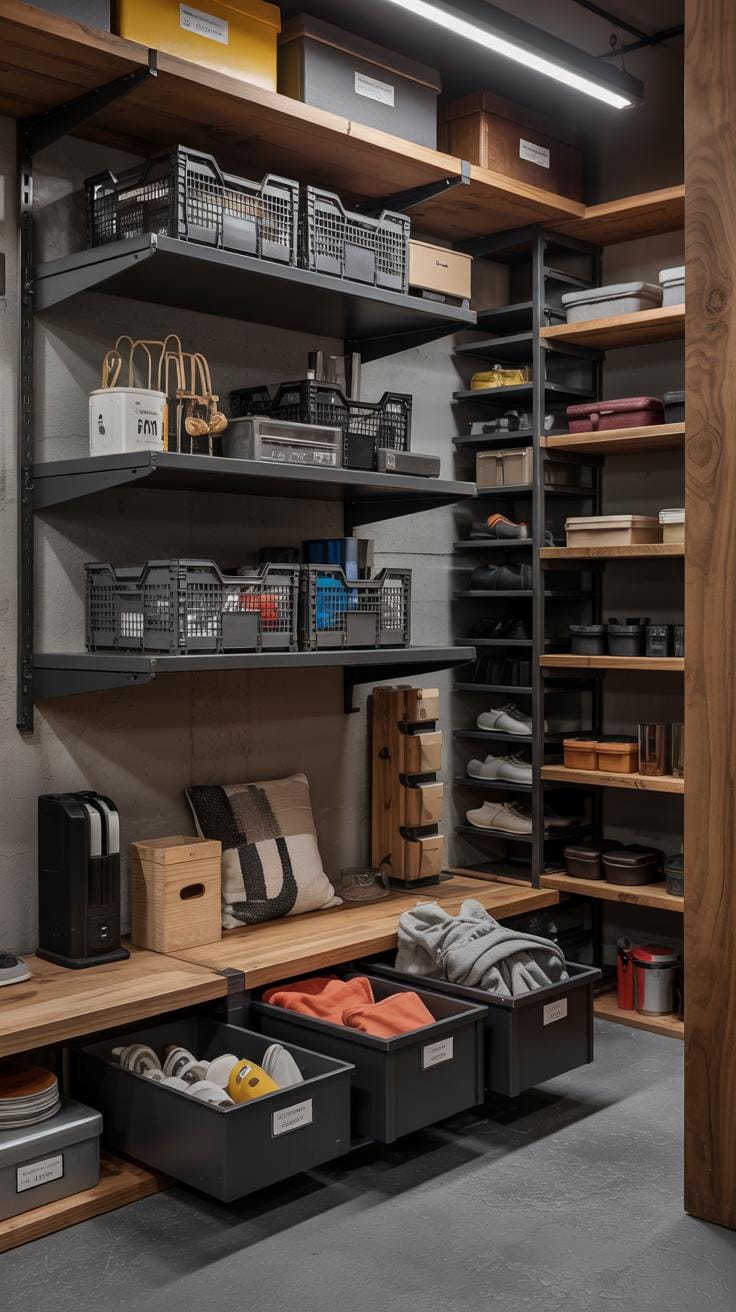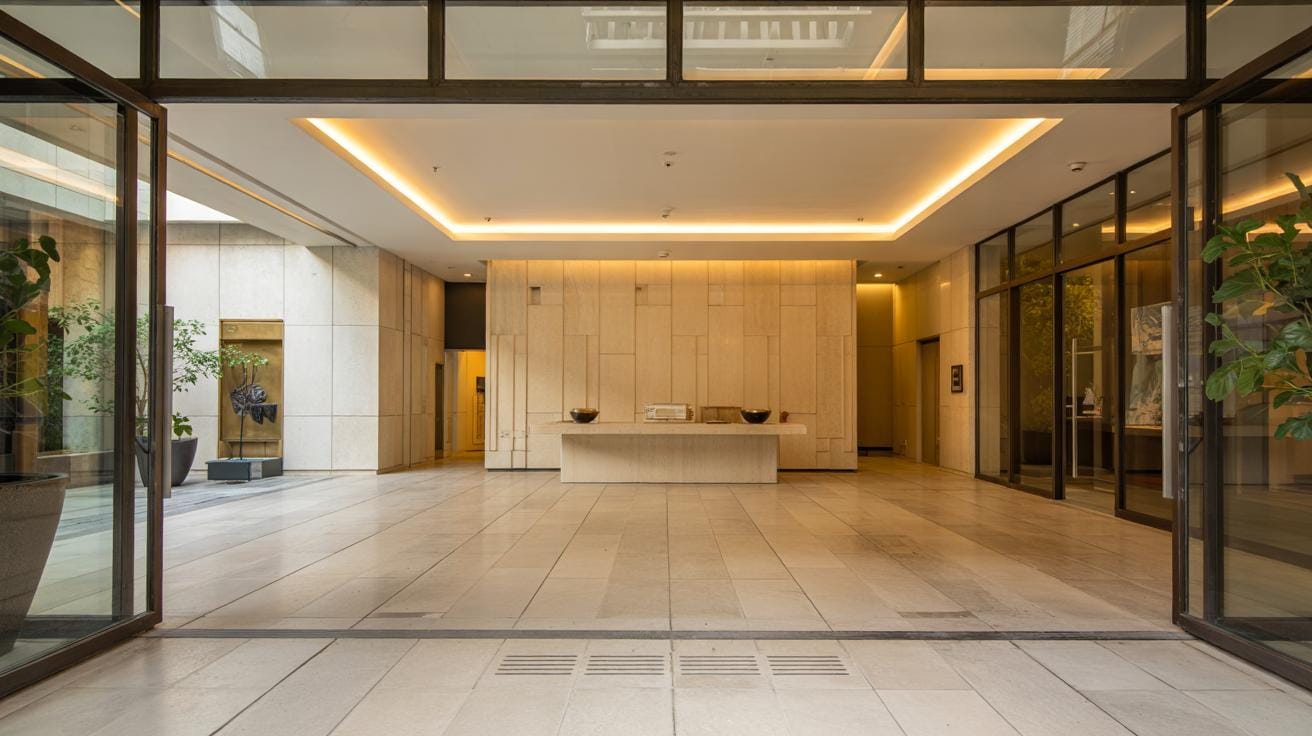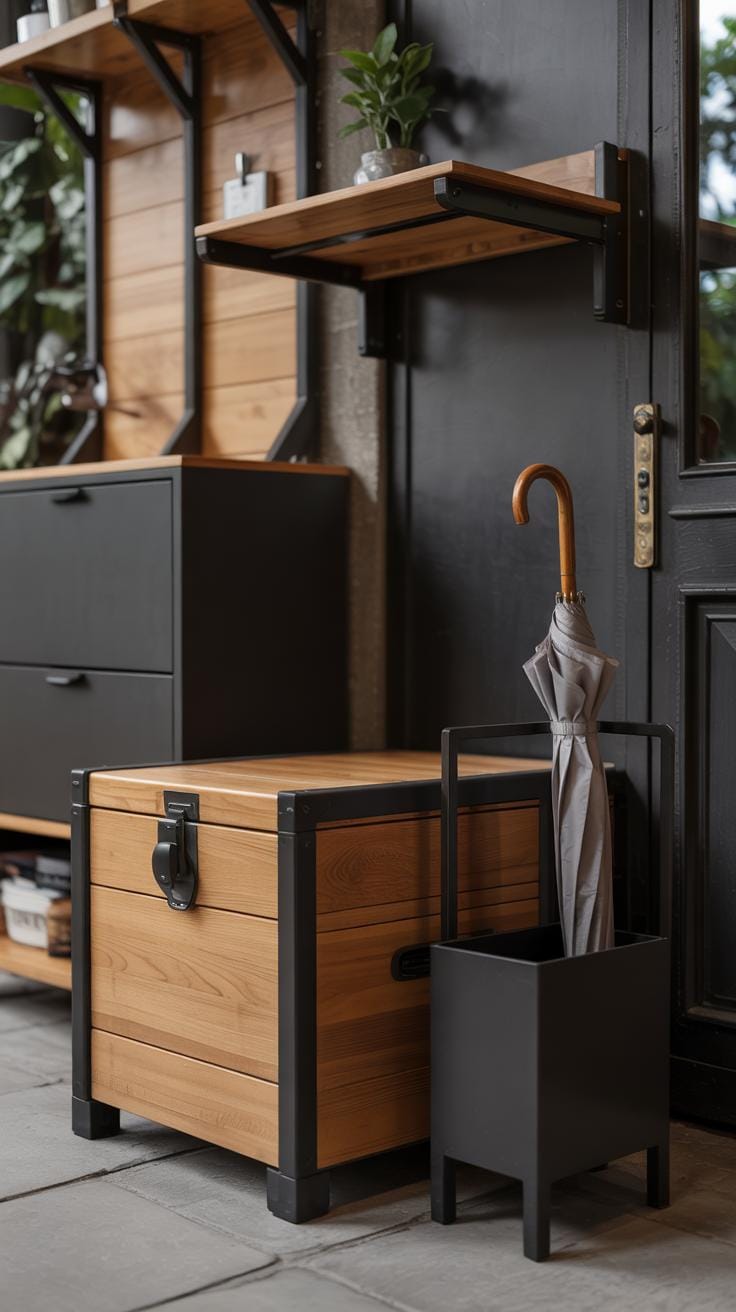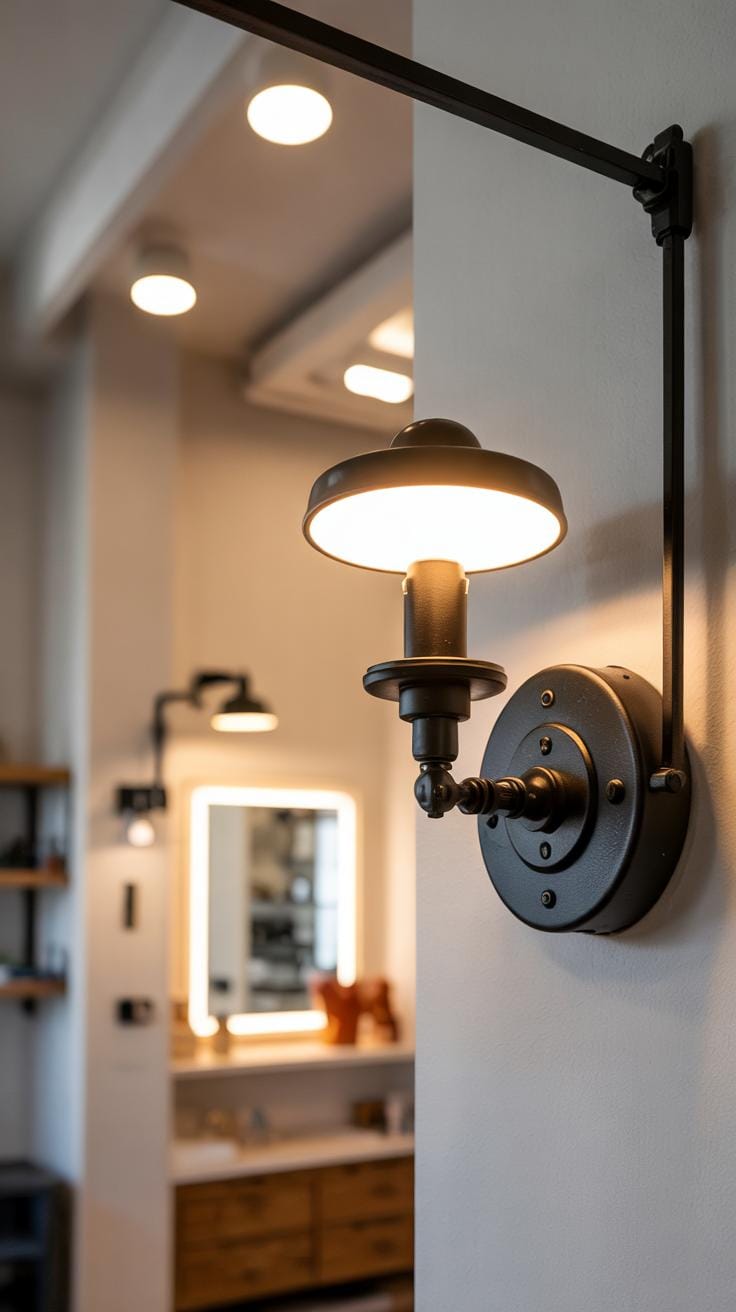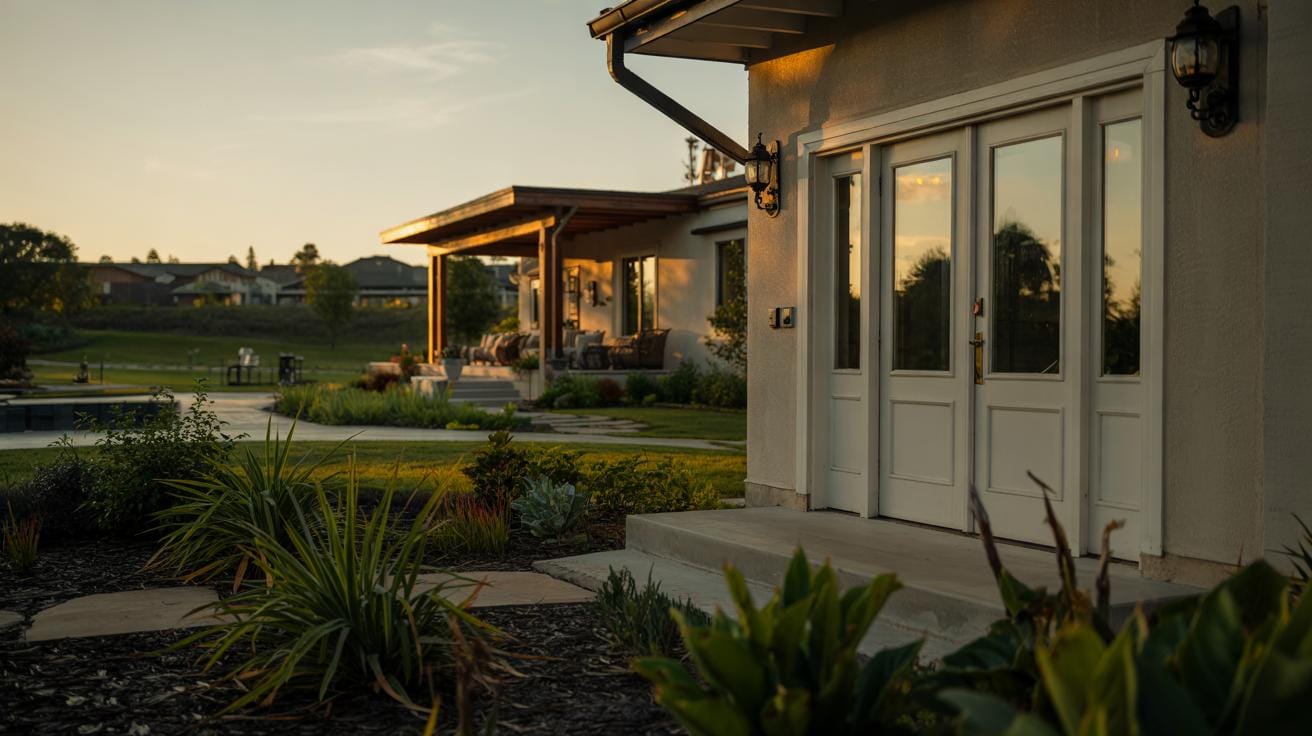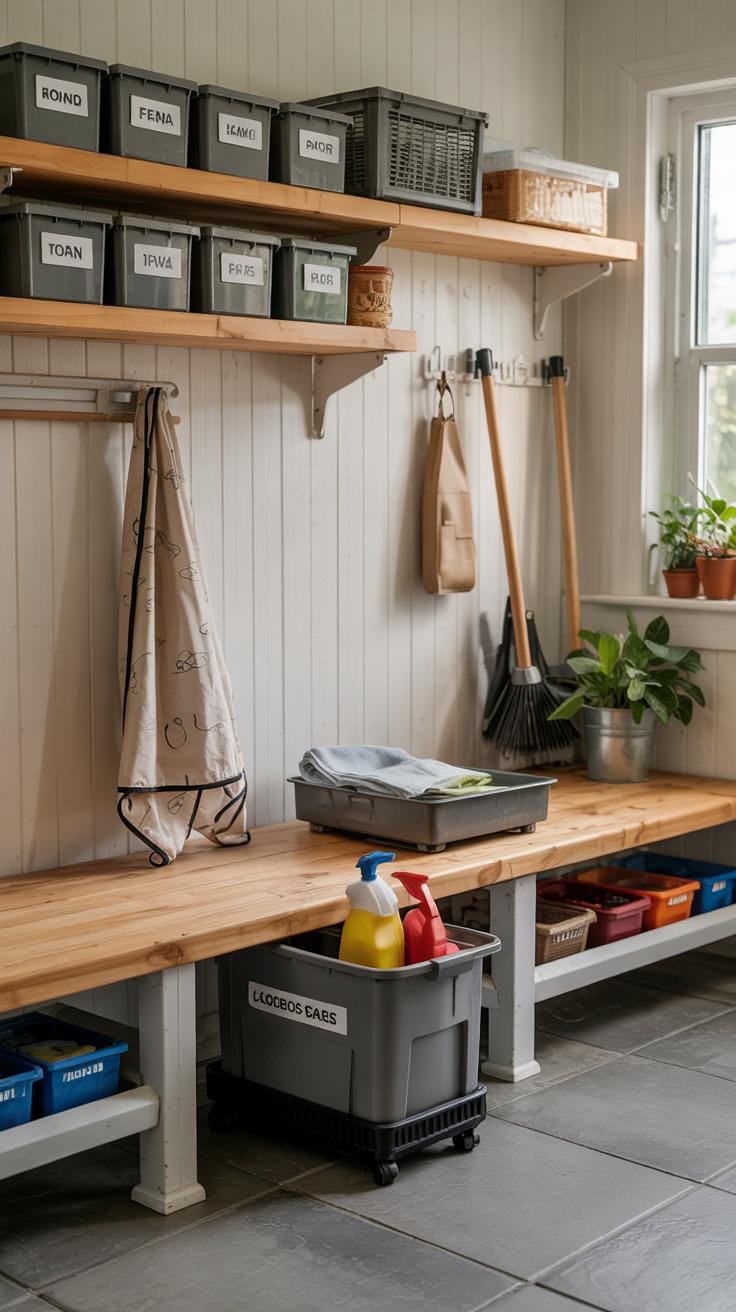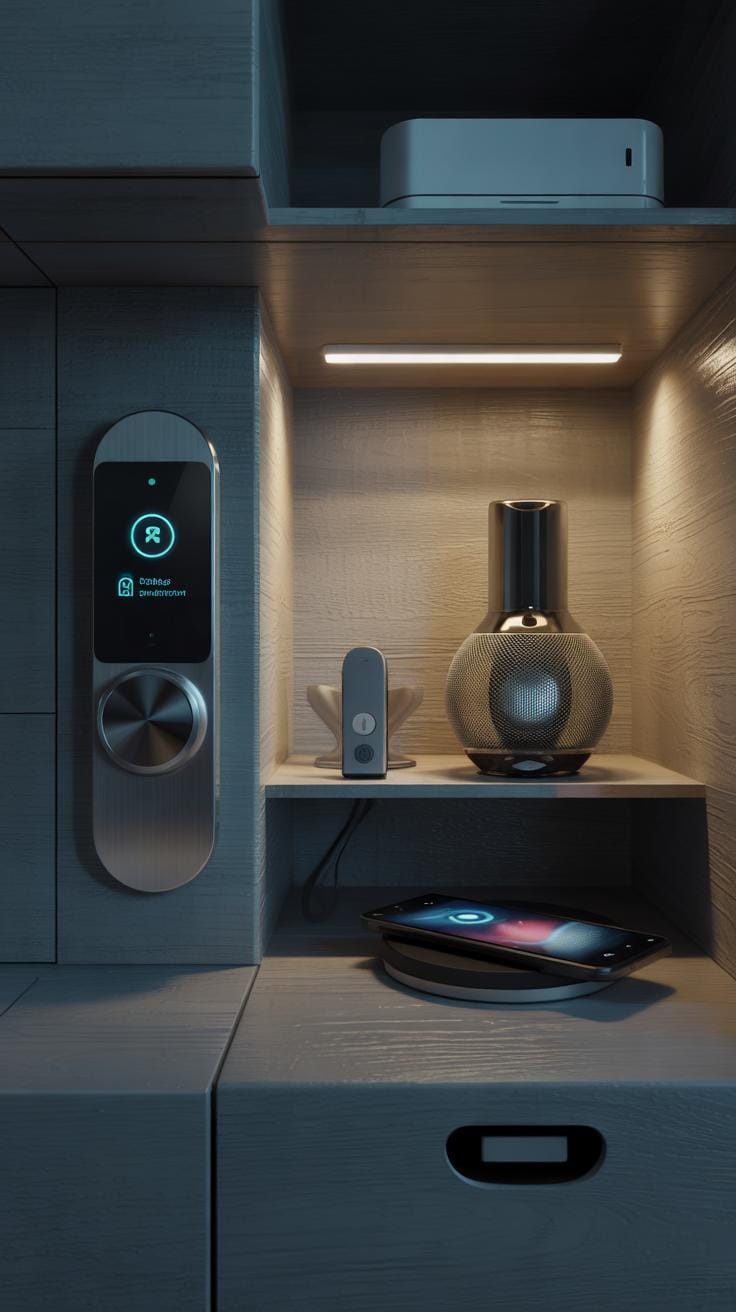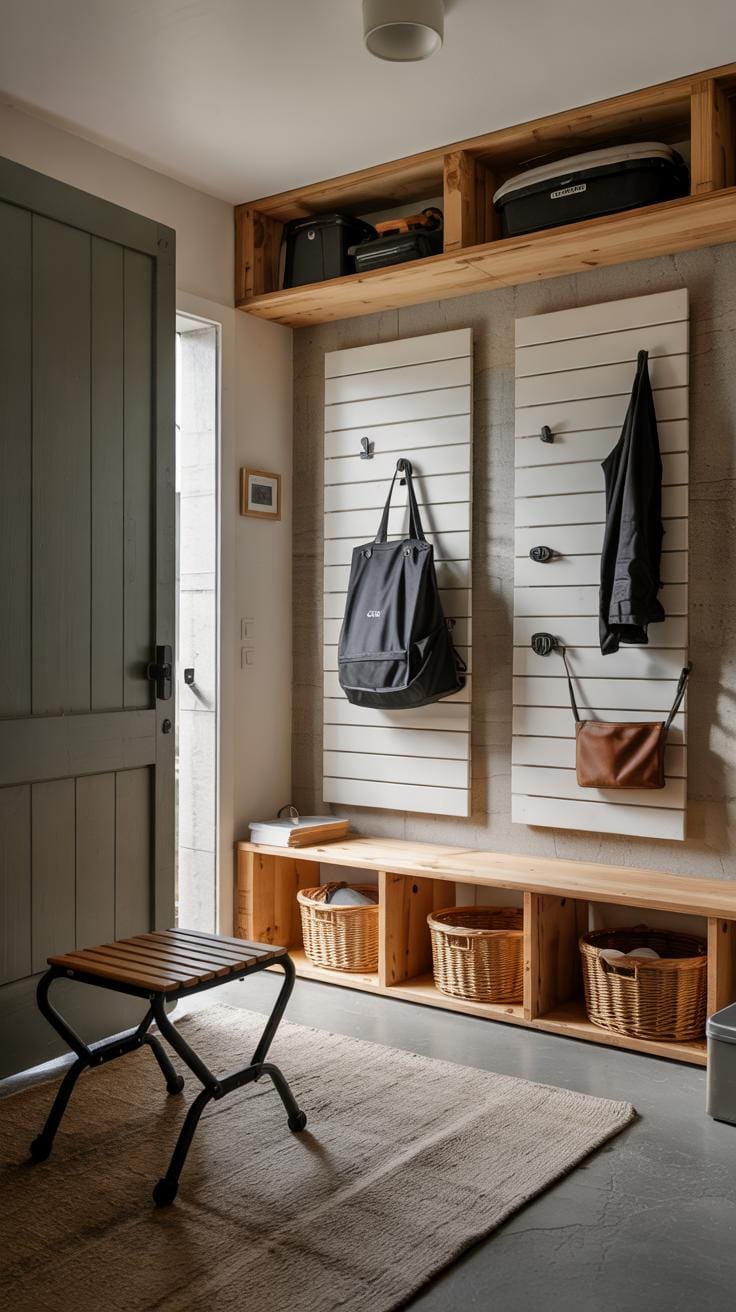Introduction
Your apartment entryway sets the tone for your home’s style and functionality. For many living in compact spaces, this area often lacks the room needed to be both inviting and practical. However, with thoughtful design, you can transform even a small entryway into a welcoming and efficient zone. This article addresses key ideas that help you use your entryway space smartly without overcrowding it.
Understanding how to organize and decorate your apartment entryway helps you create a space that fits your lifestyle. This guide explores various practical steps and design strategies to improve your entryway’s usability and appearance. Whether you want to add storage, improve aesthetics, or enhance comfort, these ideas focus on making the most of limited space while keeping your entryway functional and stylish.
Understanding Your Entryway Space
Start by measuring the length, width, and height of your apartment entryway. Knowing these dimensions helps you choose furniture that fits without overcrowding. Observe how much natural light the area receives. Bright entryways feel open, while dim ones may need added lighting or lighter colors to avoid a cramped look.
Consider the flow of movement in and out of the apartment. Think about how you use the space daily: Do you enter with groceries or bags often? This insight helps you prioritize functional elements like hooks or seating for convenience. If the entryway leads directly to living areas, you want solutions that keep the path clear.
Understanding these factors creates a foundation for smart, stylish decisions. Without this, you risk picking items that block your way or waste valuable space. When you know your entryway’s limits and opportunities, designing becomes easier and more effective. What are the main activities you perform in your entryway? Understanding this can guide your setup to fit your lifestyle well.
Measuring and Mapping Your Entryway
Measure your entryway length, width, and ceiling height using a tape measure. Write down these numbers clearly. Next, note any doors, windows, vents, or light switches that affect where furniture can go. Measure the distance from the door to nearby walls to know how much floor space is free.
Draw a simple map on paper or use an app to sketch your entryway to scale. Mark the location of fixed features like light fixtures and vents. This map helps you visualize how different pieces fit together. For example, you might realize a slim console table fits better along one wall than another.
Mapping also shows how much wall space you have for hooks or shelves. It prevents buying items that are too large or too small. By planning this way, you save time and avoid reshuffling furniture later. How much free wall space do you have for storage or decoration? Visualizing your space can answer that clearly.
Recognizing Entryway Traffic Flow
Notice how you and family or roommates move through the entryway during the day. At what times is the space busiest? Mark common paths where feet walk or where bags and shoes are placed. This helps identify high-traffic zones that should stay clear.
Knowing traffic flow is key when choosing furniture size and placement. Avoid bulky items in walkways that cause bumps or block the path. Instead, choose narrow or wall-mounted pieces if the space is tight. For example, a bench placed next to the door but off the main path keeps sitting space accessible without cluttering.
Think about how the traffic flow changes with guests or when you bring in large items like suitcases. Planning for these moments keeps your entryway functional all the time. Ask yourself: Does my current setup feel cramped or smooth when moving in and out? Adjusting based on real movement patterns improves comfort and usability.
Smart Storage Solutions for Small Entryways
Small entryways need smart storage to avoid clutter and make coming home pleasant. Wall-mounted hooks keep coats, bags, and scarves off the floor, creating an uncluttered path. Choose sturdy hooks placed at different heights to fit all family members.
Narrow shelves offer spots to stash keys, mail, and masks without taking up space. These shelves work well above eye level so your floor stays clear. They also give you a place to add small decor or a tray for loose change.
Certain cabinets fit slimly into tight spots and offer hidden storage for shoes or cleaning supplies. Pick ones with doors to keep the look tidy. Benches with built-in compartments combine seating with stowing shoes or umbrellas, saving space and reducing mess.
Which storage types fit your entryway’s size and needs? Mixing these options creates a welcoming zone that balances neatness and easy access to daily essentials.
Using Vertical Space Wisely
Vertical space is often overlooked but offers great potential in a small entryway. Wall hooks free the floor by hanging coats and bags where you can reach them fast.
Floating shelves mount on the wall without bulky support, perfect for placing small items and keeping counters clear. Tall, narrow cabinets rise without spreading wide, holding many things vertically.
Stretching storage upwards uses space you don’t walk on, which helps prevent entry areas from feeling cramped. How can you stack your belongings higher without losing quick access?
Incorporating Multi-Functional Furniture
Furniture that serves more than one purpose cuts down on extra pieces in your entryway. Benches with shoe storage underneath provide a seat to put on shoes and a hiding spot for footwear.
Consoles with drawers store frequently used items like gloves, sunglasses, or mail while maintaining a small footprint. Look for slim profiles to keep your entryway open and easy to move through.
Multi-functional pieces encourage tidiness by offering dedicated spots for items you use daily. What combination of seating and storage would make your mornings smoother?
Choosing the Right Furniture
When selecting furniture for your apartment entryway, focus on pieces that suit the space without crowding it. Choose compact furniture designed to fit small areas rather than full-sized versions. Think about slim-profile designs that keep the walkway clear and let you move easily. A narrow console table or a small bench can provide surface area and seating without taking too much space.
Light-colored furniture helps the entryway feel less cramped. White, pale wood, or soft gray finishes brighten the area and create a sense of openness. Look for materials that resist wear like laminated wood or metal with a smooth finish. These surfaces stay sleek even after heavy use near the door.
Do you tend to overlook how furniture style affects flow? Minimalist designs with clean lines match many apartment interiors and avoid visual clutter. Choosing the right piece means balancing functionality, scale, and how it visually blends with your home.
Opting for Slim and Streamlined Designs
Slim furniture fits better in narrow entryways. If your apartment has a tight corridor or limited floor space, avoid bulky options. Look for slim benches, narrow shoe racks, or wall-mounted shelving with a shallow depth. These choices keep the pathway open, so you don’t feel boxed in.
Slim designs also let more natural light pass through your entryway. You might pick a table with thin legs or open storage instead of heavy, solid pieces. This maintains brightness and airiness, making a small space easier to use. How often do you let furniture block movement without noticing?
Streamlined furniture keeps your entryway tidy. Without unnecessary ornamentation, these pieces simplify the space visually and make it easier to clean. Furniture size should not just fill space but improve how you use your entryway every day.
Selecting Materials and Colors for Space Enhancement
Light colors make small spaces feel larger and more inviting. Choose finishes in soft tones like off-white, beige, or pastel shades for your entryway furniture. These colors reflect light, helping brighten dim corners near the door.
Reflective surfaces like glass, mirrored panels, or glossy laminates increase the sense of openness. A narrow console with a glass top or a cabinet with mirrored doors can visually expand your entryway. Think about how light interacts with these materials during daytime and at night.
Durable materials should handle frequent use while looking clean and neat. Metals such as brushed aluminum or steel often match well with modern apartment styles and resist fingerprints or scratches. Wood with a smooth finish gives warmth without feeling heavy. Which materials feel both practical and stylish in your home?
Effective Lighting Strategies
Bright lighting makes a small apartment entryway feel safer and more welcoming. When natural light is limited, you can depend on smart artificial options.
Wall sconces save floor space while providing soft, even light along narrow walls. Choose fixtures with slim profiles to avoid crowding. Pendant lights work well over a compact bench or console, drawing the eye upward and making the ceiling look higher.
LED strips offer flexible placement under shelves or along door frames to highlight your entryway’s edges without adding bulk. These also use little energy and create a clean, modern look.
Good lighting helps you avoid trips or fumbling in the dark. It also sets a pleasant mood as soon as you or your guests step inside. What lighting choices could transform your entryway into a bright, inviting spot?
Maximizing Natural and Artificial Light
Use natural light to your advantage by keeping entryway windows clear of heavy drapes or blinds. A sheer curtain can soften sunshine without blocking it. Mirror placement across from a window reflects sunlight and amplifies brightness.
Layer artificial light sources to make the area feel warm at any hour. Combine overhead fixtures with wall lighting and accent lights like table lamps or LED strips. This approach balances illumination and avoids harsh shadows.
Try using bulbs that produce warm white light to create a cozy atmosphere. Do you notice how layered lighting changes the mood in your space compared to a single ceiling fixture?
Choosing Functional and Decorative Fixtures
Your lighting fixtures should serve a clear purpose while complementing your style. Select pieces with clean lines and simple shapes to avoid overwhelming a tight space.
Consider a wall sconce that doubles as a small shelf or a pendant light with a colorful shade to add character without adding clutter. Fixtures in metal or glass reflect light and maintain an open feeling.
Think about the height and width of fixtures so they don’t interfere with door swings or walking paths. Can your lighting add personality without limiting movement in your entry?
Decorative Touches That Enhance Compact Entryways
Adding personal touches to your small entryway can make it feel inviting without crowding the area. Choosing items that serve dual purposes helps you save space and add style. A thoughtfully placed rug offers a splash of color and defines the area while keeping the floor clean.
Artworks sized just right for small walls grab attention without crowding. Opt for narrow frames or a small gallery wall with pieces that reflect your personality. Even a single bold print can energize the space.
Plants bring life to the entryway and improve air quality. Choose compact options like succulents or small hanging planters that don’t take up floor space. These touches add warmth and make your entryway feel like home as soon as you walk in.
Using Mirrors to Expand Visual Space
Mirrors are powerful tools for opening up small entryways. They bounce natural and artificial light around, making the area look brighter and bigger. For the best effect, use vertically oriented mirrors to draw the eye upward and add height.
A narrow mirror beside the door or above a console table can expand the perceived space without overpowering your wall. Round mirrors break sharp lines and soften the room, while larger wall mirrors create a window-like illusion. Think about where light enters the room to position your mirror facing windows or light fixtures for maximum reflection.
Adding Personality with Small Decor Items
Choosing small decor with color and texture enhances your entryway’s charm without cluttering it. A compact rug with a pattern or bold color sets the tone right at the doorstep.
Wall art can be simple framed prints, metal sculptures, or even a small woven tapestry. Select pieces that speak to you but keep the scale appropriate for your wall space. Small potted plants, like a snake plant or a cactus, fit neatly on shelves or entryway tables and add greenery without crowding your floor.
Using these small but impactful items lets you express your style clearly while keeping your entryway open and functional. What small decorative item can you add today that reflects your personality?
Maintaining Organization in Tight Spaces
Your apartment entryway sets the tone for the entire home. Keeping it clutter-free helps you feel calm and welcomes guests warmly. Small spaces demand extra care to stay organized, so regular cleaning becomes part of your routine. Spend a few minutes each day tidying up so clutter doesn’t pile up.
Assign clear storage spots for your everyday items. Hooks for bags, shelves for mail, and trays for keys create order. When you return home, put things in their places immediately. This habit prevents clutter from taking over your entryway.
Ask yourself: What small changes can make your entryway easier to maintain? Often, simple adjustments like removing unnecessary items or adding a small basket can make a big difference. Keeping your entryway clean in a compact space means being consistent and intentional with the items you keep out.
Creating Habits for Tidiness
Simple daily habits build lasting order. Remove your shoes as soon as you walk in to avoid dirt spreading and floor messes. Create a shoe rack or mat near the door so it’s easy and natural.
Always return your keys to one dedicated spot, such as a hook or small bowl. This stops you wasting time looking for them later. When everyone in the home follows these habits consistently, the entryway remains neat and functional.
Consider setting up reminders on your phone or leaving sticky notes in visible spots to reinforce these habits at first. Soon, they become automatic actions that keep your space under control without extra effort.
Using Storage Baskets and Labels
Storage baskets help catch small items that otherwise scatter and create mess. Choose baskets that fit your space and style, then assign each one a purpose. A basket for mail, another for scarves, and one for gloves keeps everything tidy and within reach.
Labeling each basket clarifies what belongs where. You won’t waste time searching or second-guessing. Labels even encourage everyone in the home to put things away properly, maintaining order in a compact entryway.
Try clear, readable labels or simple tags for your baskets. When everything has a home, your entryway stays organized and welcoming, even with limited square footage. How can you use baskets to solve your specific clutter challenges right now?
Utilizing Technology for Smart Entryways
Installing Smart Lighting Systems
Motion sensor lights offer an easy way to brighten your entryway without using switches or extra fixtures. They turn on automatically when you arrive, saving energy and adding safety during nighttime entries. Adjustable smart bulbs take this a step further by letting you control brightness and color from your phone. You can create settings that match different times of day or moods without adding bulky lamps. This is especially useful in compact spaces where every inch matters. How could a simple tap or voice command change how you experience your entryway? Choosing slim, wall-mounted or ceiling lights prevents taking up floor or table space, keeping your small entryway open and functional.
Incorporating Compact Security Features
Small security cameras fit easily into tight corners or discreet shelves. Some models offer wide-angle views and two-way audio, allowing you to check who’s at the door or communicate remotely. Smart locks replace traditional keys with keypad codes or smartphone access, removing the need for bulky key racks. They can alert you when someone enters or if the door is left open, increasing your entryway’s security without extra hardware. Are you comfortable managing entry access from your phone? These compact solutions blend seamlessly with your existing décor, making it easier to keep your apartment safe without cluttering the space.
Adaptable Solutions for Changing Needs
Modular and movable furniture pieces let you adapt your entryway as your lifestyle changes. Instead of fixed designs, choose items that can be rearranged or resized to fit new needs. This approach helps keep your entryway functional without cluttering the space.
Think about a bench with storage cubes you can slide in or pull out depending on what you need to store. Or a coat rack that can be expanded when your collection of jackets grows. These options save space while offering flexibility.
When your daily routine or household changes—like working from home or adding more family members—you can adjust your layout quickly. Could a flexible design solve a current frustration with your entryway?
Choosing Modular Furniture Pieces
Modular furniture works well in small entryways because you can shift parts around. A seating unit that breaks into smaller stools offers different placements depending on your available space.
Some modular pieces allow you to add shelves or hooks later without buying brand-new furniture. This flexibility means you won’t have to replace everything when your needs evolve.
For example, a wall-mounted bench with detachable compartments can serve as storage one day and extra seating the next. How might rearranging your furniture improve your entryway’s flow?
Implementing Portable Storage Options
Portable storage like rolling carts, lightweight bins, or wall-mounted baskets make organizing easier in tight spaces. You can move these items as needed for cleaning or changing activities around the entryway.
A small cart with wheels can hold shoes or mail and slide under a console when not in use. Wall-mounted organizers with hooks or small shelves keep everyday items within reach but off the floor.
Portable solutions let you customize your entryway depending on your immediate needs. What items do you want close by but out of the way in your current setup?
Conclusions
Designing an apartment entryway in a compact space challenges you to think strategically about how every inch is used. Focusing on storage solutions, multi-functional furniture, and the right lighting can create an entry that efficiently serves its purpose. You hold the power to turn your entryway into a neat and organized transition zone that welcomes guests and makes daily routines smoother.
Implementing even a few of the practical ideas shared here can drastically improve your entryway’s look and utility. Consider how you use your space daily and select ideas that suit your habits and style. Your entryway can become more than just an entry point; it can be a space that reflects your personality and keeps your home tidy and inviting at the same time.


